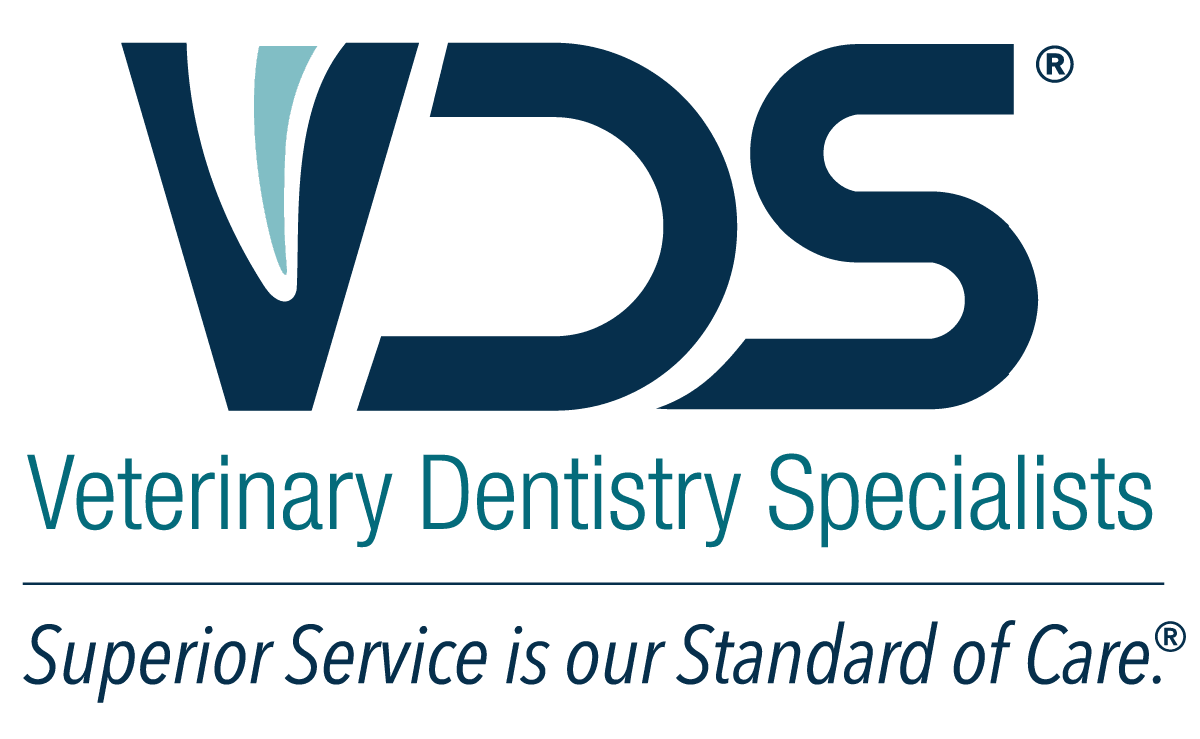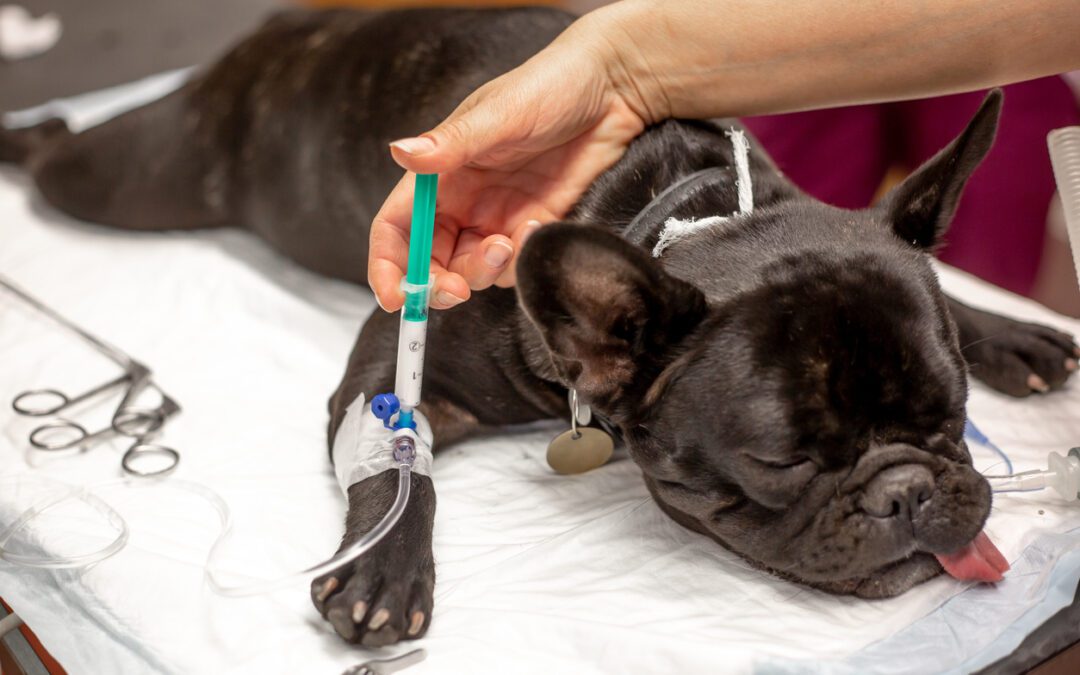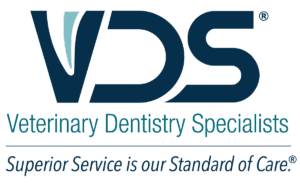One of the main concerns pet owners have about dental procedures is their pets undergoing anesthesia. While anesthesia does carry some inherent risks, it is a necessary part of the dental procedure. Going to the dentist is a scary endeavor for many humans, so you can imagine that it would be terrifying for our pets, who can’t understand what’s happening and why it’s necessary for their health. Anesthesia not only makes the process less frightening, but allows us to provide a better quality of care and makes the procedure safer. And with the board-certified anesthesiologists at Veterinary Dentistry Specialists managing your pet’s anesthesia, you can rest assured that your pet will be in good hands throughout the procedure.
Anesthesia is Necessary for Patient Comfort
We love animals and want to help them in any way we can. Unfortunately, we can’t explain to them that we’re trying to help! While a human dental patient can sit cooperatively with their mouth open wide, our veterinary patients don’t know what we’re doing and don’t understand that we’re trying to help. The dental procedure is scary and uncomfortable for an awake pet. There are bright lights, strange noises, unfamiliar sensations in their mouth, and they need to keep their mouth open wide for the duration of the procedure – which they can’t willingly do the same way a human can. Anesthesia allows your pet to rest comfortably during the procedure, completely unaware of what’s going on around them. Anesthesia also allows us to use various pain control options to ensure your pet remains comfortable and pain-free throughout the procedure.
Anesthesia is Necessary to Facilitate a Thorough Oral Examination
Because your pet cannot hold their mouth open, it can be difficult to examine the entire oral cavity of an awake pet. Under anesthesia, your pet is relaxed and unaware, allowing us to perform a thorough oral exam without any undue stress or discomfort. A thorough oral exam is essential to identify areas of dental diseases, such as gingivitis, fractured teeth, and tooth resorption. Each tooth will be probed to identify areas of periodontal pocketing, and dental radiographs will be performed to examine the tooth roots and assess their viability. In some cases, advanced imaging such as computed tomography (CT), may also be performed. Your pet needs to hold very still while these imaging procedures are performed, and anesthesia facilitates this process.
Anesthesia is Needed to Facilitate a Thorough Dental Cleaning
If you’ve ever had a dental cleaning, you likely remember the whirring of the instruments and the strange feeling on your teeth as they were scaled and polished. In your case, you understood that this procedure was necessary for your health. With our pets, we can’t explain to them why we’re doing these strange and frightening things. Anesthesia allows us to thoroughly scale and polish your pet’s teeth. To fully address the root cause of dental disease, scaling must be performed above and below the gingival margin, also known as the gum line. Anesthesia facilitates this process by keeping your pet still, calm, and comfortable throughout the procedure so that the entire mouth can be carefully examined and cleaned. If further dental care is needed, such as extraction of teeth, anesthesia ensures that your pet remains unaware and pain-free during this process.
Anesthesia Promotes Patient Safety
Scaling the teeth to remove dental tartar involves the use of an ultrasonic scaler as well as sharp hand tools. If your pet moves or reacts during this process, they could potentially be injured by this equipment. Performing the dental procedure under anesthesia ensures that your pet remains still and safe throughout the procedure. Anesthesia also ensures the safety of the veterinary team as they are working inside your pet’s mouth.
The endotracheal tube is another important aspect of your pet’s safety. While your pet is under anesthesia, a cuffed endotracheal tube will be placed to protect your pet’s airway. This allows the veterinary team to administer oxygen and anesthetic gases to your pet, and also ensures that water and bacteria from the dental procedure do not get aspirated into your pet’s lungs. The endotracheal tube is removed when your pet is recovering from anesthesia after the procedure.
Anesthesia is Safer with a Board-Certified Anesthesiologist
At Veterinary Dentistry Specialists, anesthesia is administered by board-certified veterinary anesthesiologists. A board-certified veterinary anesthesiologist is a veterinarian who has completed years of additional training in anesthesiology and has passed a rigorous certification examination administered by the American College of Veterinary Anesthesia and Analgesia. A board-certified veterinary anesthesiologist is a highly trained expert in the field of anesthesia and will develop an individualized anesthetic plan for your pet, taking into consideration your pet’s age, health status, and the procedure to be performed. The board-certified anesthesiologists at Veterinary Dentistry Specialists use the latest advancements in anesthetic drugs, monitoring equipment, and analgesic techniques to ensure your pet is safe and comfortable throughout the dental procedure.
A Dental Procedure Must Include Anesthesia to be Effective
While you may see advertisements for “anesthesia-free dentals” performed by groomers or even veterinarians, these procedures cannot fully address dental disease and are often frightening and uncomfortable for your pet. The American Veterinary Dental College deems these procedures inappropriate because of the risk to patient safety, the inability to perform a complete oral examination, and the lack of access to the subgingival area of every tooth. A dental procedure must include anesthesia to be safe and effective.
Anesthesia promotes patient comfort and safety, facilitates a thorough examination and cleaning, and is safe when administered by trained professionals such as the board-certified anesthesiologists at Veterinary Dentistry Specialists. If you have further questions about your pet’s dental procedure, we would be happy to address your concerns.






